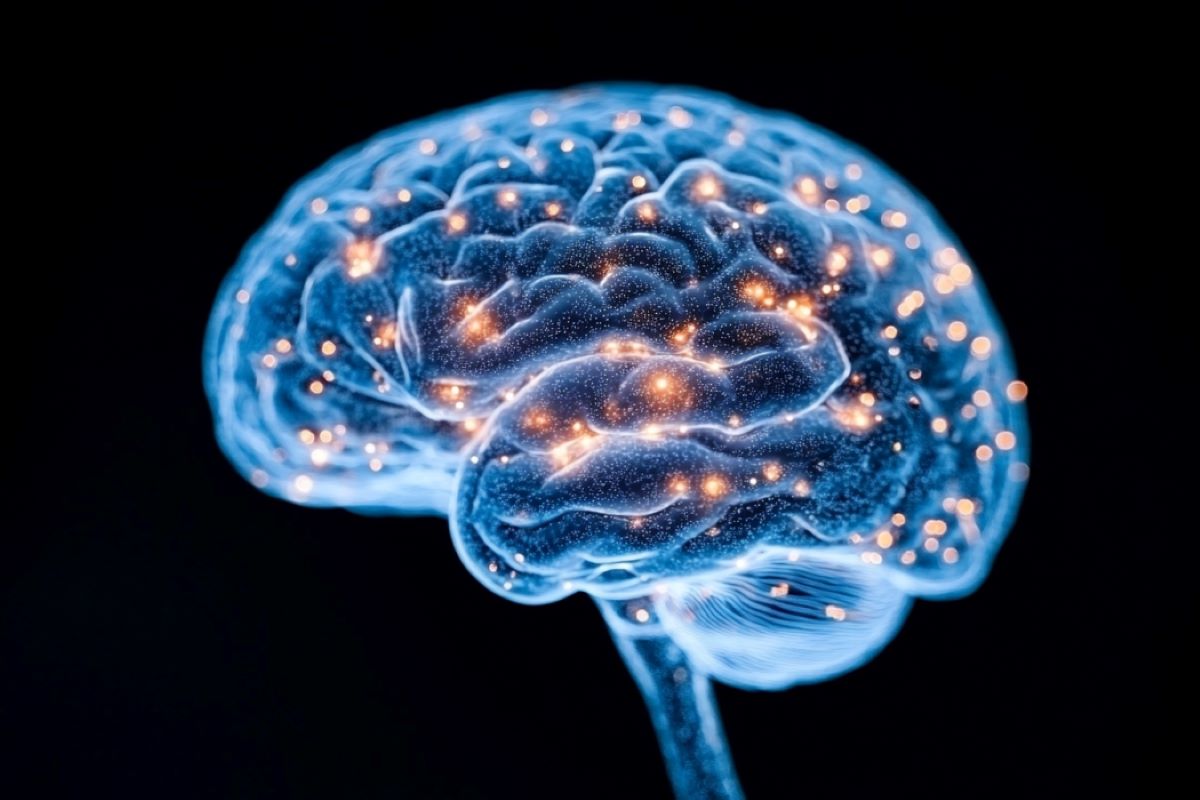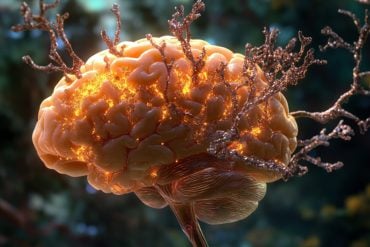Summary: People with Parkinson’s disease (PD) who experience visual hallucinations have reduced brain responses to unexpected visual changes, a marker known as visual mismatch negativity (vMMN). Using EEG, researchers compared brain activity in PD patients with and without hallucinations and discovered that those with hallucinations showed weaker vMMN signals.
This reduction correlated with the severity of psychosis, suggesting that vMMN could serve as a strong marker for Parkinson’s-related psychosis. Additionally, the serotonergic pathway was identified as a potential therapeutic target for treating visual hallucinations in Parkinson’s patients.
Key Facts:
- Reduced brain response (vMMN) correlates with visual hallucinations in PD.
- EEG data showed weaker vMMN in Parkinson’s patients with hallucinations.
- The serotonergic pathway may be a target for treating psychosis in Parkinson’s.
Source: King’s College London
Reduced brain activity responding to unpredicted visual changes is a marker of psychosis in Parkinson’s disease and a potential therapeutic target.
Researchers at the IoPPN used electroencephalography (EEG) to observe participant’s brain activity when presented with these visual cues. The aim is to determine whether visual mismatch negativity (vMMN) can be used to distinguish PD with visual hallucinations and PD without.
The work is published in the journal Brain Communications.

Psychosis and visual hallucinations are one of the most common non-motor aspects of Parkinson’s disease (PD), affecting up to 40% of individuals with PD. Psychosis in PD commonly starts as minor hallucinations (for example the feeling of a presence in a room) which can develop into fully formed visual hallucinations, and delusions as the disease progresses. It greatly affects an individual’s quality of life.
The biology behind Parkinson’s disease psychosis (PDP) has been attributed to the use of dopaminergic drugs used to treat PD in the past. However, more recent research suggests that there are other mechanisms underlying PDP, as visual hallucinations have been reported by drug naïve people with Parkinson’s or receiving different types of PD medications.
The study observed 20 participants with PD with visual hallucinations and compared their EEG data, a measure of their brain electrical activity, with 18 people with PD, but without visual hallucinations.
Participants were asked to focus their attention at a cross sign at the center of a screen and press a button when they noticed the cross changing size. They were asked to pay no attention to any images surrounding the cross, which are the unpredicted cues that will trigger vMMN.
Analysis of the EEG data shows that participants with PD with visual hallucinations show reduced vMMN in some areas of the brain. Additionally, the researchers observed a correlation between the severity of visual hallucination and amount of vMMN reduction.
“We were able to confirm that we can use visual mismatch negativity as a strong marker of psychosis in Parkinson’s disease. This is important because the experience of individuals living with Parkinson’s disease varies greatly, with both motor and non-motor symptoms.
“A deeper understanding of the brain mechanisms involved in hallucinations and psychosis can help individuals and their loved ones better understand the situations.
“In addition, this validation of the sensitivity of this task in discriminating between individuals with and without hallucinations, even when other clinical characteristics do not differ, is very promising: this task can be used as a marker for drug effects in investigations of new potential treatments,” says Miriam Vignando, Research Fellow at the Department of Neuroimaging and the first author of the study.
The research also looked at the role of the serotonergic pathway in Parkinson’s with visual hallucinations. Serotonin is a brain chemical involved in multiple brain processes.
The pharmacological modulation of part of the serotonergic pathway observed reduced visual hallucinations induced by a psychedelic compound in healthy participants, and in five individuals with PD and hallucinations when compared to a placebo. This suggests that this pathway is a potential therapeutic target for this symptom.
“Parkinson’s disease psychosis is poorly understood. These psychosis symptoms do not have good treatments and they also indicate the patient may have a worse prognosis, with an increased risk of dementia.
“The EEG results tell us that Parkinson’s disease psychosis has some similarities with psychosis symptoms in other disorders, such as schizophrenia. We also pinpointed a key pathway, the serotonergic pathway, as a strong candidate for further drug development,” says Mitul Mehta, Professor of Neuroimaging & Psychopharmacology at King’s and the senior author of the study.
About this visual neuroscience and Parkinson’s disease research news
Author: Miriam Vignando
Source: King’s College London
Contact: Miriam Vignando – King’s College London
Image: The image is credited to Neuroscience News
Original Research: Open access.
“Visual mismatch negativity in Parkinson’s psychosis and potential for testing treatment mechanisms” by Miriam Vignando et al. Brain Communications
Abstract
Visual mismatch negativity in Parkinson’s psychosis and potential for testing treatment mechanisms
Psychosis and visual hallucinations are a prevalent non-motor symptom of Parkinson’s disease, negatively affecting patients’ quality of life and constituting a greater risk for dementia. Understanding neural mechanisms associated to these symptoms is instrumental for treatment development.
The mismatch negativity is an event-related potential evoked by a violation in a sequence of sensory events. It is widely considered an index of sensory change-detection. Reduced mismatch negativity response is one of the most replicated results in schizophrenia and has been suggested to be a superior psychosis marker.
To understand whether this event-related potential component could be a similarly robust marker for Parkinson’s psychosis, we used electroencephalography with a change-detection task to study the mismatch negativity in the visual modality in 20 participants with Parkinson’s and visual hallucinations and 18 matched Parkinson’s participants without hallucinations.
We find that visual mismatch negativity is clearly present in participants with Parkinson’s disease without hallucinations at both parieto-occipital and frontal sites, whereas participants with Parkinson’s and visual hallucinations show reduced or no differences in the two waveforms, confirming the sensitivity of mismatch negativity to psychosis, even within the same diagnostic group.
We also explored the relationship between hallucination severity and visual mismatch negativity amplitude, finding a negative correlation between visual hallucinations severity scores and visual mismatch negativity amplitude at a central frontal and a parieto-occipital electrodes, whereby the more severe or complex (illusions, formed visual hallucinations) the symptoms the smaller the amplitude.
We have also tested the potential role of the serotonergic 5-HT2A cascade in visual hallucinations in Parkinson’s with these symptoms, following the receptor trafficking hypothesis. We did so with a pilot study in healthy controls (N = 18) providing support for the role of the Gi/o-dependent pathway in the psychedelic effect and a case series in participants with Parkinson’s and visual hallucinations (N = 5) using a double-blind crossover design.
Positive results on psychosis scores and mismatch amplitude add further to the potential role of serotonergic modulation of visual hallucinations in Parkinson’s disease.






